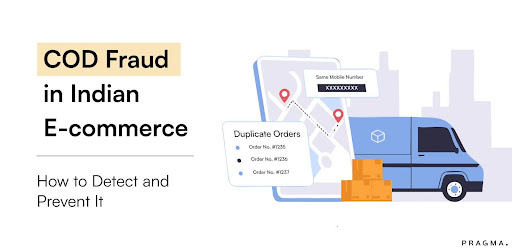
How to lower returns and keep ratings safe for D2C brands?
For D2C brands, it is crucial to minimise returns while maintaining high customer ratings.
1. Create clear return policies
Write policies in simple language. Clearly explain timelines, rules, exceptions, and customer choices. This reduces confusion and builds trust.
2. Track reasons for returns
Monitor why customers return products. Look for patterns, like poor fit in clothing or unmet expectations in electronics. Use this data to improve product pages and operations.
3. Identify high-risk segments
Find products, locations, or customers causing costly returns, especially with cash on delivery. Offer incentives for prepaid orders or apply restrictions on COD.
4. Make returns easier and personalised
Use a returns management system (RMS) to automate approvals, address checks, and messaging. Proactively support customers after purchase to reduce negative experiences.
5. Improve product details and reviews
Provide accurate images, detailed descriptions, and highlight recent customer reviews. Encourage customers to rate products after exchanges.
6. Encourage exchanges over refunds
Simplify the exchange process and offer perks like free shipping or rewards for exchanges. This retains revenue and can boost ratings.
7. Use data beyond return rates
Track customer satisfaction and review scores after returns. Test new strategies and communication methods, then adapt based on results.
Ready to lower returns and protect your ratings?
Discover how Bepragma’s RMS empowers Indian D2C brands to streamline returns, recover revenue, and delight customers.
Get In Touch | Learn More about RMS
Effective return management and a seamless checkout process are crucial for the success of any ecommerce business in India.
Because
- 7 out of 10 shoppers abandon their carts before completing the checkout
- 28% abandon their carts due to a complicated checkout experience
- 78% expect a fast and easy checkout process, while 47% of want it to take than 1 minute
- The ecommerce returns rate in India is estimated to be 30-40% on average
- The cost of reverse logistics, which includes shipping, handling, and processing of returns, is estimated to be around 8-10% of the total e-commerce revenue in India
- By offering hassle-free returns and refunds, ecommerce companies can improve customer satisfaction and loyalty rates by 30-35%. This is essential for Limiting Return to Origin Shipment
The checkout process is the final step in the purchase journey.
- User-friendly design: The checkout page should be easy to navigate and use, with clear instructions and minimal distractions.
- Multiple payment options: Offer multiple payment options to customers, including credit/debit cards, net banking, mobile wallets, and cash on delivery.
- Secure payment processing: Use a secure payment gateway to ensure that customer payment information is protected.
- Mobile responsiveness is crucial because a significant percentage of ecommerce traffic comes from mobile devices. Optimizing the checkout process for mobile users can help Eliminate RTO in Ecommerce
The Return/Refunds/Exchanges stage is the final step in the customer experience journey.
- Automated system: For immediate action instead of manual involvement in the fast moving ecommerce world.
- Easy returns process: Make it easy for customers to initiate returns. This could involve providing a prepaid return label or allowing customers to initiate returns through your website.
- Timely refunds and an easy returns process help build trust with customers and encourage them to make future purchases. Effective management includes Handling Ecommerce RTO Steps
Together: Return Management & Checkout System
When both are handled by a single entity, the perks offered come in 2’s
- Data, and
- Performance
Data
The compiled data from customers on every checkout and the corresponding return rate and reason helps brands understand
- The interest behind the purchase, and whether the return was due to false promises or other factors
Performance
Optimisation of your checkout in terms of upselling and cross selling, or improving returns and the efficacy of its automation - all take place parallelly.
Meaning, you understand your clique by understanding individual customer journey in both “Checkout Experience” and “Return Experience”
[Note: Pragma optimises performance with the help of data from 450+ brands]
To Wrap it Up
A well-designed return management system and a seamless checkout process are crucial for the success of any ecommerce business in India. By prioritising these elements, you can build trust with customers and encourage repeat business.

FAQ:
Q: Why is it important to integrate return management with the checkout experience?
A: Clear, visible return policies at checkout boost confidence and lower purchase hesitation, leading to more conversions.
Q: How can brands minimize returns through better checkout and order confirmation?
A: Accurate product details, size guides, and order verification reduce mistaken or unnecessary returns.
Why are return management and checkout processes critical for e-commerce success?
A smooth checkout reduces cart abandonment, and efficient return management boosts customer satisfaction and loyalty, both essential for sustainable growth in India’s competitive e-commerce environment.
What percentage of Indian online shoppers abandon carts due to checkout issues?
28% of shoppers abandon carts because of complicated checkout experiences, emphasising the need for easy and fast checkout.
What is the average return rate for e-commerce in India?
The average return rate is estimated between 30-40%, which significantly impacts profitability without efficient return handling.
What features define a good checkout process?
Key features include user-friendly design, multiple secure payment options (cards, wallets, net banking, COD), mobile responsiveness, and fast load times.
How does integrating checkout and return management benefit brands?
Integration allows brands to analyse customer purchase and return data collectively, enabling better understanding of customer behaviour and optimising both upselling and return processes.
Talk to our experts for a customised solution that can maximise your sales funnel
Book a demo




.png)